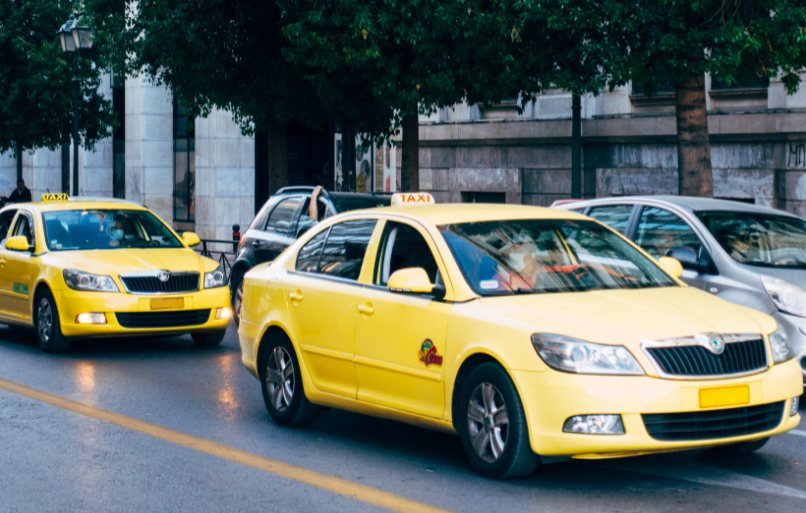Cities Rethink Parking as Ride-Hailing Services Grow
The world, as we know it today, bears no resemblance whatsoever to the yesteryears. Advancements in technology have disrupted every possible industry and the automotive sector is no stranger to it. There has been an increasing change in the way people look at transportation. In fact, the very term and concept is being shifted from ‘transportation’ to ‘mobility.’
Where traditional transportation was a “system-centric” concept, modern mobility is completely “user-centric,” recognizing the fact that transportation must be responsive to the needs and preferences of commuters and society. Let’s find out why cities should rethink parking as ride-hailing services grow.

Ride-Hailing Services on the Rise
The new concept of shared-use mobility lies at the centre of New Mobility Services (NMS) and allows users access to various modes of transportation – bicycles, motorbikes, and cars – on a short-term and on-demand basis.
Mobility-as-a-service has emerged as a thriving concept with several push forces and enablers responsible for its popularity – one of the main push forces being a millennial aversion to car ownership. And what’s more is that one of the main reasons the Gen-Z is against car ownership is the stress related to parking.
And the key enablers of ride-hailing services are smartphone applications and smart parking technologies such as IoT working in tandem to connect paying passengers with drivers who offer rides for a certain fee (for their private vehicles).
These ride-hailing services are easy to use and understand. Via a user-friendly smartphone application, the user simply needs to input their drop-off destination (with the pick-up destination either automatically entered through their phone’s GPS or manually entered on the map)and opt for the vehicle type (mini, micro, sedan, etc.) and the ride type (full or share) that best suits their needs and budget and book their ride.
Since these ride-hailing services recommend vehicles that are lurking nearby the pick-up location, the driver generally arrives within minutes of the booking. All that is now left to do is enjoy the ride and make the payment on arrival. How hassle-free is that!
Also Read: Park and Ride Systems: Is It Defining Better Future for Urban Commuters?
How Cities are Coping with the Revenue Loss
Ever since the concept of mobility-as-a-service has emerged, there has been a bi-directional relationship between it and parking. And why not! After all, one of the top reasons cited for favouring ride-hailing services over car ownership is the increasing stress, hassle, and time and money loss involved in finding a vacant parking spot.
Ride-hailing does alter the parking demand. No longer is parking viewed as a necessary evil, with the degree of its necessity constantly decreasing. With ride-hailing services, people can easily access destinations of their choice without requiring an accompanying parking space. As a result, the demand for parking spaces is seeing a fall. This, in turn, has naturally led to revenue loss for the parking industry.
Cities are compelled to reduce the supply of parking spots and to look for alternative ways of allocating existing, unused parking infrastructure towards other needs and land uses. The diminished value and use of parking infrastructure offer the opportunity to put them to more in-demand and purposeful uses – parks, plazas, and similar elements – that make a city more lively and habitable.
Moreover, the low demand for parking spots owing to lesser driving trips and declining car ownership has proven to be insightful, allowing cities to rethink and better manage curb space – allocating more space for walking and bicycling, and most importantly, monetizing car trips (both private vehicles and ride-sharing vehicles) to cover up the losses incurred. For example – several airports have started charging ride-hailing vehicles a pick-up and drop-off fee for the curb space allotted to them.
People who use ride-sharing apps also get confused because of the large number of options they have. Each of these options have their pros and cons and the right choice suited to the ride-hailer’s lifestyle can save or waste a lot of money. Read this comprehensive comparison of Uber vs Lyft in terms of service and cost to weigh your options.
Even the rise in mobility services such as ride-hailing can have their downsides – cab-sharing drivers wandering around with no passengers (dead-heading), unnecessary traffic congestions, and decline of sustainable travel options such as walking and bicycling. However, the root of the issue lies in the misuse of spaces – no proper space seems to be available for walking and bicycling.
Hence, the need of the hour is to make cities livable on a human scale with increased space for more sustainable transportation options and to allow technology to adapt to it – a truth more and more cities are waking up to.
